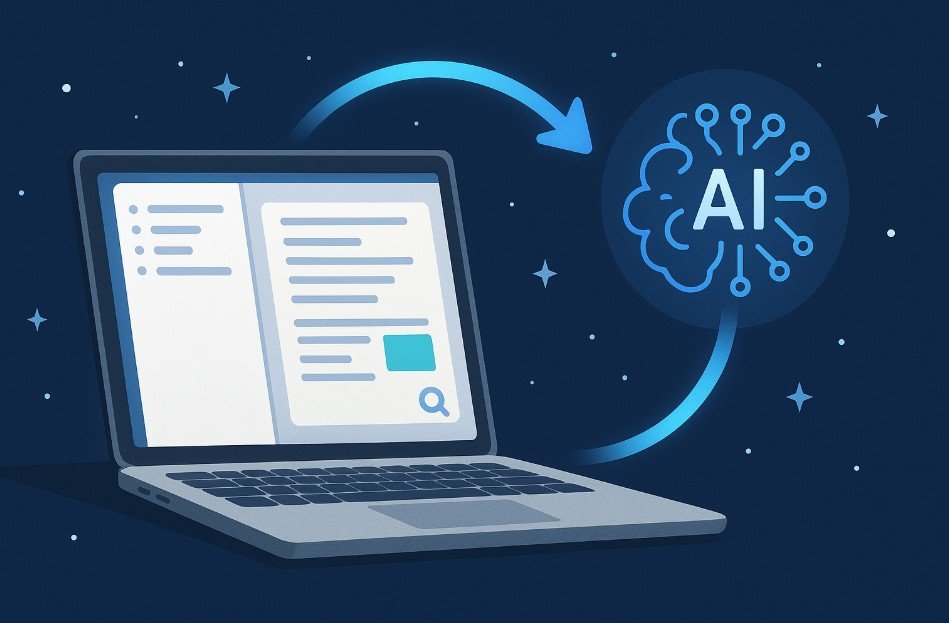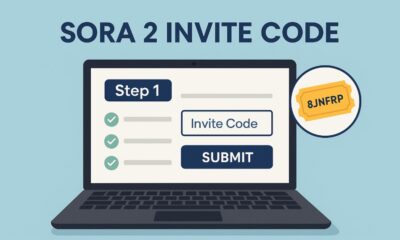Tech
The Second Brain, Upgraded: Combining Note-Taking Apps with AI for Research

Modern knowledge work is less about finding information and more about reducing cognitive friction between discovery and delivery. A traditional “second brain” (your digital note system) captures snippets and highlights, but it struggles to keep pace with the firehose of new sources and the expectation to synthesize quickly. The upgrade is obvious: pair a robust note-taking stack with AI that can retrieve, reason, and draft—on demand and with context. Below is a field guide to building that system so it’s fast, trustworthy, and genuinely useful for research.
Why Your Second Brain Needs an Upgrade
Information density has outpaced linear workflows. Even strong personal knowledge management (PKM) systems hit limits: manual tagging is inconsistent, search is hit-or-miss, and synthesis is slow. AI closes those gaps by:
- Normalizing messy notes (OCR, summarization, de-duplication).
- Contextual retrieval (semantic search over tags-only search).
- Reasoning over collections (argument mapping, counterfactuals).
- Rapid synthesis (first drafts that cite your sources).
Expert perspective: Most teams don’t fail at capture—they fail at re-access. If a note isn’t discoverable in <15 seconds, it might as well not exist. The combination of embeddings-based retrieval and a clean ontology (your categories) solves that discoverability problem at scale.
The Core Architecture: Capture → Curate → Compute → Create
This four-stage flow reduces chaos without adding busywork.
Capture
Pull inputs from everywhere: web clippers, email, PDFs, transcripts, images of whiteboards. Use your note app’s web clipper and a “quick capture” mobile shortcut. Standardize inputs with a minimal frontmatter (title, source, date, topic, confidence).
Curate
Clean as you go:
- De-noise: remove boilerplate, ads, cookie banners.
- Annotate: add one-sentence claim and a confidence score.
- Link: connect to prior notes via backlinks or related tags.
Compute
Let AI work on your notes:
- Summarize long texts into claims, evidence, and limitations.
- Extract entities (people, orgs, methods, datasets).
- Embed each note for semantic retrieval.
- Ask targeted questions against your corpus (“what contradicts claim X?”).
Create
Output faster with quality:
- Structured outlines → draft sections → argument checks → references.
- Maintain a review checklist: evidence sufficiency, counterarguments, plain-language pass, and fact checks.
Choosing the Stack: Tools That Play Nicely Together
You don’t need a hundred tools. You need a note backbone and AI that runs inside your context.
Backbone note apps (pick one):
- Obsidian/Markdown vaults: local-first, link-heavy, graph views, great for researchers who prefer raw files and plugins.
- Notion/All-in-one workspace: flexible databases, good for teams, clean UI, solid API.
- OneNote/Evernote: reliable capture, mixed structure; pair with external AI for retrieval.
AI layer (must-haves):
- Local or hosted embeddings to power semantic search over your notes.
- Document QA that can cite exact passages or blocks.
- Agentic helpers for repeatable chores (bibliographies, table extraction).
- Privacy controls so sensitive notes don’t leave your environment.
Expert tip: Whatever you choose, enforce one canonical repository. Shadow notebooks and loose PDFs break retrieval and erode trust.
Read more: How AI Assistants Are Quietly Shaping Our Future
Building a Knowledge Graph That AI Can Actually Use
Minimal Ontology Beats Maximal Tagging
Pick 8–12 high-signal tags (domain, method, stage, audience). Avoid tag sprawl. Use hierarchical tags (e.g., method/causal-inference).
Stable IDs and Backlinks
Each note gets a stable ID (auto-generated). When AI summarizes, append backlinks like “Related: [IDs]”. This creates navigable context for both humans and models.
Evidence Blocks, Not Just Highlights
Store claims with structured fields:
- Claim: one sentence.
- Evidence: quoted passage(s) with source and location.
- Limitations: known weaknesses.
- Confidence: Low/Medium/High.
AI can reason across these blocks far better than across free-form highlights.
Retrieval That Works: From Keyword to Semantic
Traditional search fails when your query words don’t match note words. Embeddings fix this by mapping meaning, not surface form.
Practical setup:
- Generate embeddings for every note and block (paragraph or section).
- Store vectors in a lightweight local DB (or your app’s built-in index).
- Create a query UI: show top passages with source snippets and jump-to links.
- Add reranking (optional) to privilege recency or source reliability.
Quality rule: Every AI answer must attach verbatim citations. No citations, no copy-paste.
AI Workflows for Real Research
Literature Review Triage
- Drop PDFs and links into an “Inbox.”
- AI produces structured cards (topic, method, dataset, main claim, sample size, risks).
- Flag “keepers” automatically if they connect to ≥3 existing notes.
Method Extraction and Comparison
Ask AI to extract methods (e.g., matching vs. IV vs. RCT), assumptions, and failure modes, then produce a comparison table with when-to-use and when-to-avoid.
Argument Mapping
Have AI map the thesis → claims → evidence → counterevidence. Then ask for the strongest counterargument and the minimal additional evidence needed to overturn it. This guards against confirmation bias.
Drafting with Guardrails
- Start with an outline generated from your notes.
- Insert only cited ideas.
- Prompt AI to write “explain like I’m a domain peer, not a layperson”—this cuts fluff and preserves precision.
Natural mid-article anchor: If you’re stuck, you can simply Ask AI Online to surface opposing viewpoints from your own corpus first, then widen to credible external sources; the key is to keep citations attached to every claim so review remains fast and defensible.
Data & Table Handling
Use AI to parse tables from PDFs into CSV, standardize headers, and validate totals. Always run a quick reconciliation (row counts, checksum) before analysis.
Reference Management
AI can generate BibTeX/CSL entries from DOIs, but you must verify metadata. Store references alongside notes so your drafts compile reproducibly.
Governance: Accuracy, Bias, and Privacy
Accuracy Checks
- Source-attached answers: AI responses must include quoted spans and URLs/page numbers.
- Triangulation: For material claims, require two independent sources or one primary source.
- Hallucination trap: Ban answer-only prompts; always ask “Show sources and highlight exact evidence.”
Bias and Coverage
- Maintain a “contrarian shelf” of sources.
- Periodically ask AI: “What relevant perspectives or geographies are missing from our corpus?”
Privacy Model
- Segment vaults: confidential, internal, public.
- For confidential notes, run local models or hosted models with enterprise retention controls.
- Log every AI query touching confidential notes.
What “Good” Looks Like: A Mini Case Study
A research team exploring small-business credit policy built this stack:
- Backbone: Markdown vault with strict frontmatter and backlinks.
- Embeddings: nightly index of all notes and PDFs.
- Workflows: intake → triage cards → method tables → argument map → outline.
- Results: literature screening time dropped from ~12 hours to ~3; drafting time for a 3,000-word brief fell by ~40%; error rate on citations decreased because every paragraph surfaced its supporting quotes.
The biggest lift wasn’t the model; it was discipline—consistent frontmatter, evidence blocks, and a non-negotiable citation rule.
Common Failure Modes (and Fixes)
- Tag Explosion: Too many tags make retrieval worse. Fix: consolidate to a small, hierarchical set.
- AI-Only Drafts: Fast but brittle, often uncited. Fix: require source-attached drafting.
- PDF Graveyard: Great capture, zero extraction. Fix: automate table/text extraction on ingest.
- One-Off Prompts: Inconsistent results. Fix: codify prompts as playbooks with examples.
A 30-Day Implementation Plan
Week 1: Foundation
- Pick one backbone app and stick to it.
- Define frontmatter fields (title, source, date, topic, method, confidence).
- Set up capture tools (web clipper, email-to-note, voice memo → transcript).
- Import your last 3–6 months of key docs.
Week 2: Retrieval
- Generate embeddings for notes and PDFs.
- Build a search panel that returns passage + citation + jump-to.
- Write three retrieval prompts: “find contradictions,” “summarize with highlights,” “list methods with assumptions.”
Week 3: Synthesis
- Create an outline template (thesis → claims → evidence → gaps).
- Automate triage cards for new sources.
- Pilot a short memo (<1,200 words) built entirely from your corpus with citations.
Week 4: Governance & Scale
- Add a quality checklist to your publishing workflow.
- Segment vaults by sensitivity; enable local inference for confidential notes.
- Record 3–5 reusable playbooks (e.g., literature review, market scan, post-mortem) with example inputs/outputs.
Expert Prompts That Actually Help
Evidence-First Summarization
“Summarize this paper into claim, evidence (quoted), method, limitations, and confidence. Return exact page numbers or paragraph IDs.”
Contradiction Finder
“From my notes tagged topic/x, list statements that contradict each other. For each pair, show the quoted passages and sources.”
Methods Matrix
“Extract research methods across these sources and produce a table with assumptions, failure modes, data needs, sample sizes, and when-to-use/avoid.”
Outline with Gaps
“Draft a structured outline for [question]. Insert [GAP] wherever evidence is weak, and propose minimal additional research to close it.”
Final Thoughts
The second brain metaphor resonated because it promised remembering everything. The AI-augmented second brain delivers something more valuable: reasoning with what you remember. When notes are structured, retrieval is semantic, and outputs are citation-anchored, you produce research that is faster to write, easier to review, and harder to tear down.
Build the smallest working version in a month. Keep the ontology tight, the prompts reusable, and the citations mandatory. Your future self—and your reviewers—will thank you.
Read more: Robust Area Design in AI and Machine Learning Models














